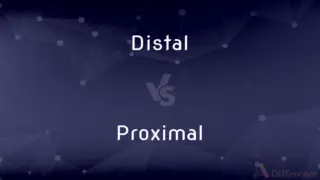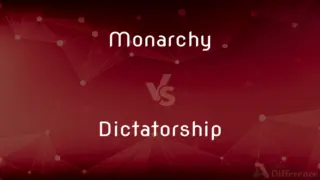Hairstyle vs. Forelock — What's the Difference?
By Maham Liaqat & Urooj Arif — Updated on March 28, 2024
A hairstyle encompasses various ways of cutting, styling, or arranging hair, while a forelock specifically refers to a lock of hair growing or falling over the forehead.

Difference Between Hairstyle and Forelock
Table of Contents
ADVERTISEMENT
Key Differences
Hairstyles are a broad term encompassing all manners of haircuts, arrangements, and modifications one can apply to the hair on their head. They can vary greatly in complexity, from simple styles like ponytails and buzz cuts to elaborate arrangements involving braiding, curling, or the use of accessories. The forelock, on the other hand, is a more specific aspect of hair, focusing solely on the lock of hair that falls or grows over the forehead. It can be a distinguishing feature of both human and animal hairstyles or coats, particularly in horses where it is quite prominent.
Hairstyles are chosen for a variety of reasons, including personal expression, cultural identity, convenience, and fashion trends. In humans, the styling of the forelock can vary; it can be cut short, left long and swept to the side, or styled into shapes like quiffs or pompadours, depending on the overall hairstyle and personal preference.
While hairstyles can convey a wide range of social, cultural, and personal meanings, a forelock is often a detail within a broader hairstyle, though it can significantly affect the overall appearance and style. For example, a well-defined forelock can add to the aesthetic of a hairstyle, offering a focal point or accentuating the facial features. Forelocks have also held various symbolic meanings throughout history and across cultures, from signifying youth and innocence to denoting status or rebellion. The treatment of the forelock in a hairstyle can reflect these meanings, whether intentionally or as a byproduct of fashion trends.
In the context of care and styling, the approach to managing a hairstyle versus a forelock can differ. General hair care practices, such as washing, conditioning, and regular trimming, apply to all hair, but styling products and techniques may be used more specifically to achieve a desired look for the forelock, considering its impact on the overall hairstyle and facial framing.
Comparison Chart
Definition
The fashion in which a person's hair is cut, styled, or arranged.
A lock of hair growing over or falling across the forehead.
ADVERTISEMENT
Scope
Encompasses the entire head of hair.
Specifically refers to hair over the forehead.
Variability
Includes countless styles and arrangements.
Limited to variations within the front hair segment.
Cultural Significance
Can signify identity, social status, and cultural affiliation.
Symbolism varies, often less broadly significant than overall hairstyle.
Styling Techniques
Can involve cutting, coloring, texturizing, and accessorizing.
Focused on shaping or positioning the hair at the forehead.
Compare with Definitions
Hairstyle
Can denote a personal or cultural identity.
His mohawk hairstyle is a statement of his individuality.
Forelock
A section of hair over the forehead.
He brushed his forelock to the side to clear his vision.
Hairstyle
The arrangement or styling of hair on the head.
Her hairstyle for the wedding featured intricate braids and flowers.
Forelock
Can be distinctive in animals, especially horses.
The horse’s white forelock stood out against its dark coat.
Hairstyle
Often changes with fashion trends.
She adopted the bob cut, a popular hairstyle this season.
Forelock
May be styled as part of a larger hairstyle.
Her forelock was styled into a quiff, adding height to her hairstyle.
Hairstyle
Varied across different age groups and genders.
The teenager chose a trendy hairstyle to express his youthful style.
Forelock
Has historical or symbolic meaning in some cultures.
In ancient times, tugging one's forelock was a sign of respect.
Hairstyle
May require specific care or styling products.
Maintaining her curly hairstyle requires special conditioners.
Forelock
Focus of specific grooming attention.
He applied gel to his forelock to keep it in place throughout the day.
Hairstyle
A hairstyle, hairdo, or haircut refers to the styling of hair, usually on the human scalp. Sometimes, this could also mean an editing of facial or body hair.
Forelock
The forelock or foretop is a part of a horse's mane, that grows from the animal's poll and falls forward between the ears and onto the forehead. Some breeds, particularly pony breeds, have a naturally thick forelock, while other breeds, such as many Thoroughbreds, have a thinner forelock.
Hairstyle
A style in which the hair is cut and arranged.
Forelock
A lock of hair that grows from or falls on the forehead, especially the part of a horse's mane that falls forward between the ears.
Hairstyle
The style in which someone's hair has been cut and arranged.
Forelock
A cotter, usually of iron, that is used to draw an unthreaded bolt tight and secure it.
Forelock
The part of a person's hairstyle which covers the forehead.
Forelock
The part of a horse's (or similar animal's) mane that lies on its forehead.
Forelock
A wedge pushed through a hole at the end of a bolt to hold it in place.
Forelock
To fix in place with a forelock (wedge)
Forelock
The lock of hair that grows from the forepart of the head.
Forelock
A cotter or split pin, as in a slot in a bolt, to prevent retraction; a linchpin; a pin fastening the cap-square of a gun.
Time is painted with a lock before and bald behind, signifying thereby that we must take time by the forelock; for when it is once past, there is no recalling it.
On occasion's forelock watchful wait.
Forelock
A lock of hair growing (or falling) over the forehead
Forelock
A lock of a horse's mane that grows forward between the ears
Common Curiosities
What is a forelock?
A forelock is a specific lock of hair that grows or falls over the forehead, often styled distinctively within the broader context of a hairstyle.
What is a hairstyle?
A hairstyle refers to the way in which someone's hair is cut, styled, or arranged, offering a means of personal expression and cultural identity.
How do cultural perceptions of the forelock vary?
Cultural perceptions of the forelock can vary widely, from a sign of beauty or youth to a symbol of status or rebellion, reflecting the diverse meanings attached to hair across different societies.
Do all hairstyles include a forelock?
Not all hairstyles will have a forelock, as it depends on the length and arrangement of the front hair. Some styles may pull or cut the hair in such a way that a forelock is not present.
Can the style of a forelock change the overall appearance of a hairstyle?
Yes, the styling of a forelock can significantly alter the overall look of a hairstyle by adding a focal point or accentuating facial features.
Has the symbolism of the forelock changed over time?
The symbolism can change over time and across cultures, reflecting broader societal attitudes towards hair, fashion, and identity.
What considerations might someone have when styling their forelock?
Considerations might include the overall balance and symmetry of the face, the impression they wish to convey, and practical concerns such as visibility and comfort.
What are some common challenges with maintaining a forelock?
Challenges can include keeping the hair in place, especially in windy conditions, and styling the forelock to complement the rest of the hair and facial features.
How can someone care for their forelock?
Care can include regular washing, conditioning, and the use of styling products to achieve the desired appearance, along with routine trims to maintain its shape.
Are there any hairstyles specifically focused on the forelock?
Yes, some hairstyles, like the pompadour or quiff, specifically emphasize the forelock by styling it upward or to the side to create a prominent feature.
Share Your Discovery

Previous Comparison
Distal vs. Proximal
Next Comparison
Monarchy vs. DictatorshipAuthor Spotlight
Written by
Maham LiaqatCo-written by
Urooj ArifUrooj is a skilled content writer at Ask Difference, known for her exceptional ability to simplify complex topics into engaging and informative content. With a passion for research and a flair for clear, concise writing, she consistently delivers articles that resonate with our diverse audience.











































